Abstract
Data on factors associated with the occurrence of Down syndrome in a highly inbred population were evaluated to investigate the presence of a genetic control of nondisjunction in man. In Kuwait, close consanguinity occurs in 40% of marriages. In its main obstetric hospital, 20 trisomic Down babies out of 11,614 singleton births were delivered over a 12-month period. Chi-square analyses indicate the occurrence of Down syndrome to be linked to two independent factors: consanquinity of parents and maternal age. The relative risk is approximately four times greater for closely related than for nonrelated parents (P less than .005); a possible explanation for this is the existence of a gene that induces mitotic nondisjunction in the homozygous fertilized ovum. An alternative explanation is the existence of an autosomal recessive gene which results in meiotic nondisjunction in the homozygous parents. Consanguinity is usually perpetuated in certain families, or sections of the population, and parents in highly inbred families have a higher probability to be homozygotes for that gene.
Full text
PDF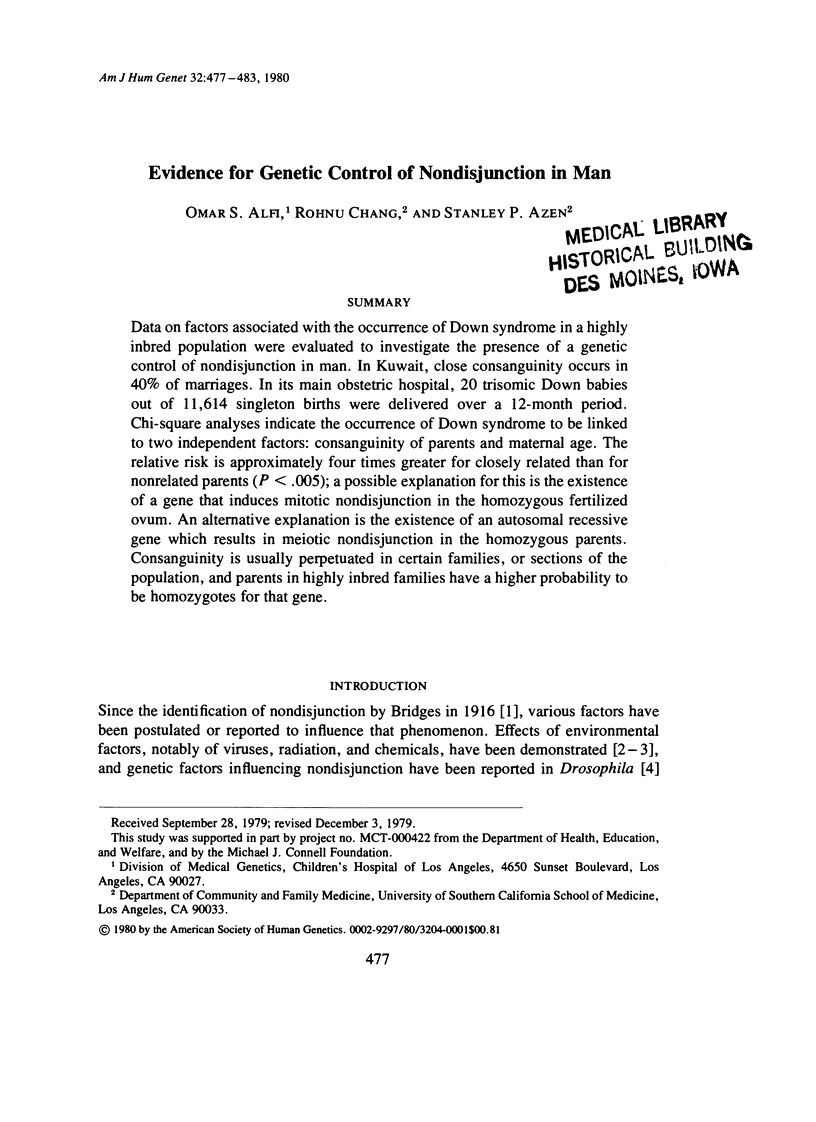

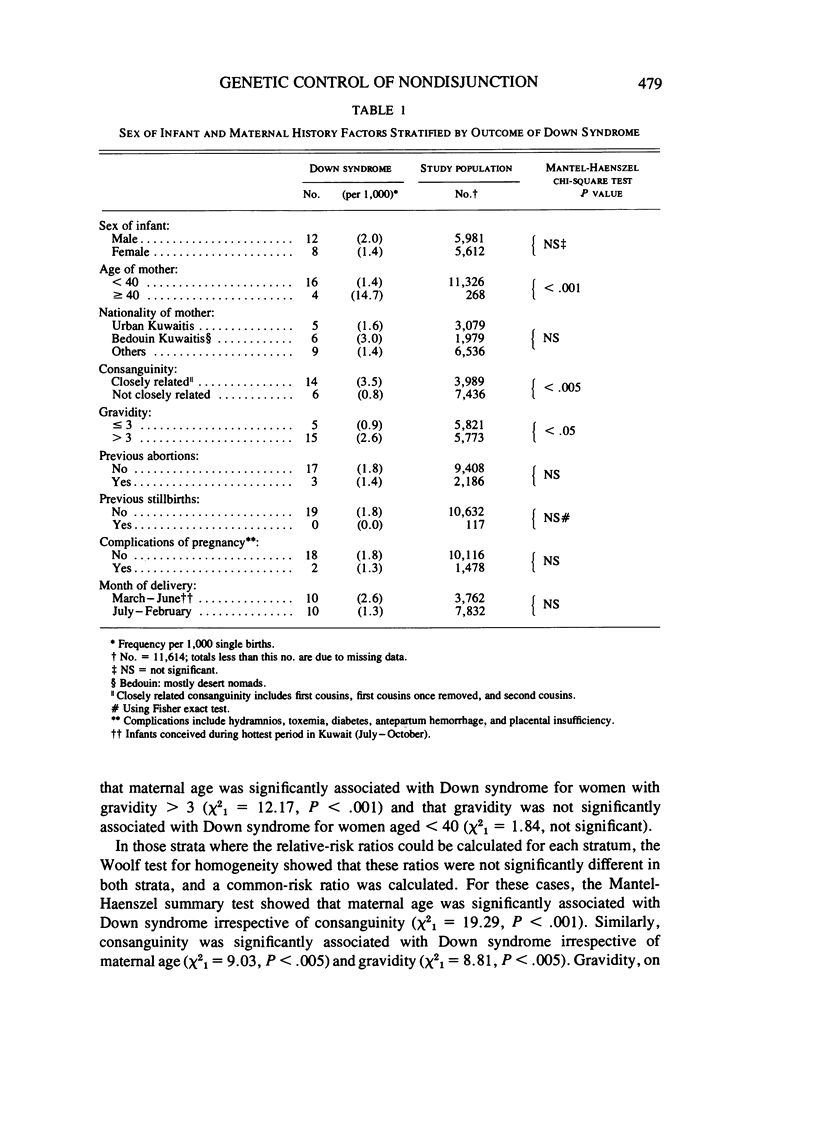
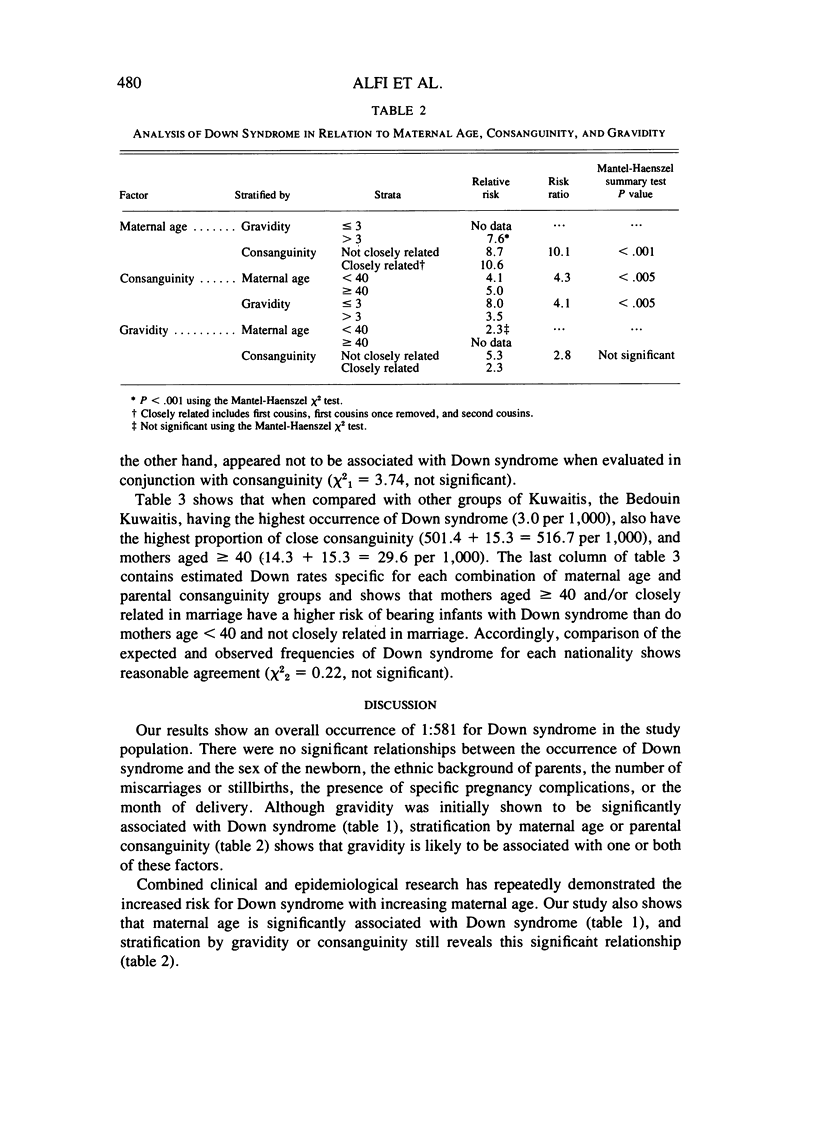
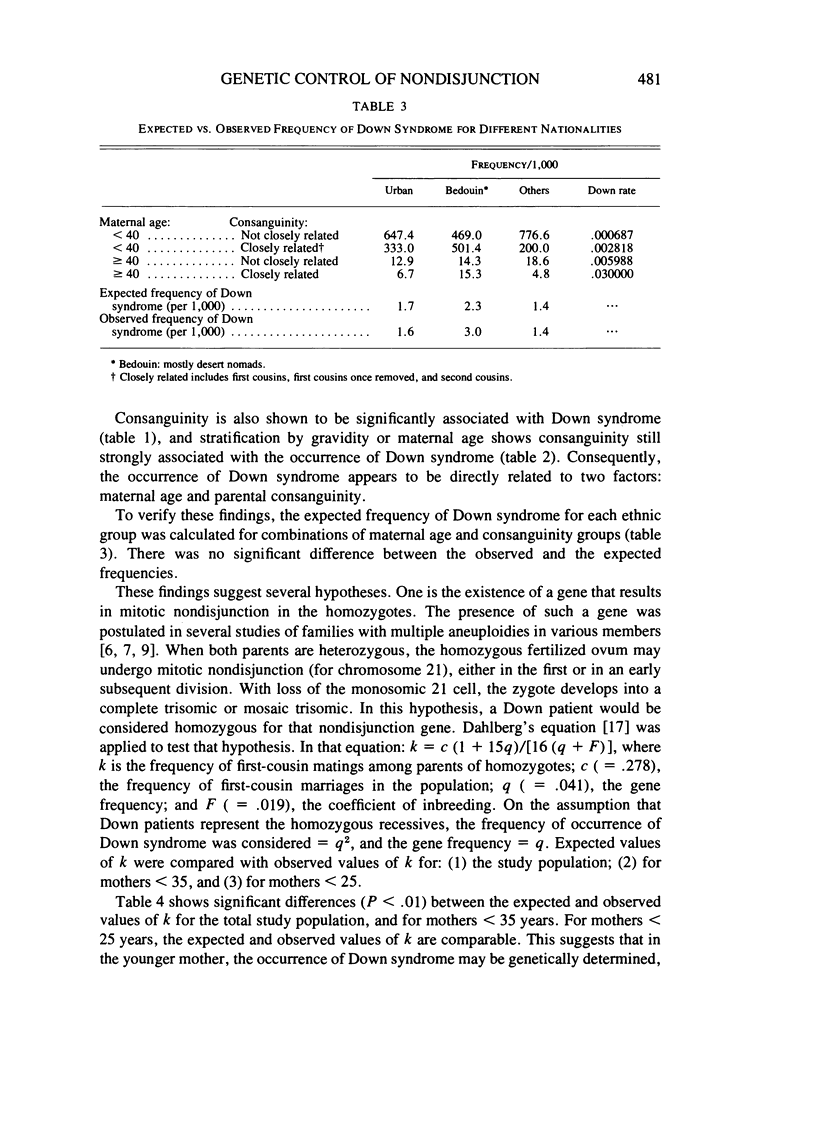
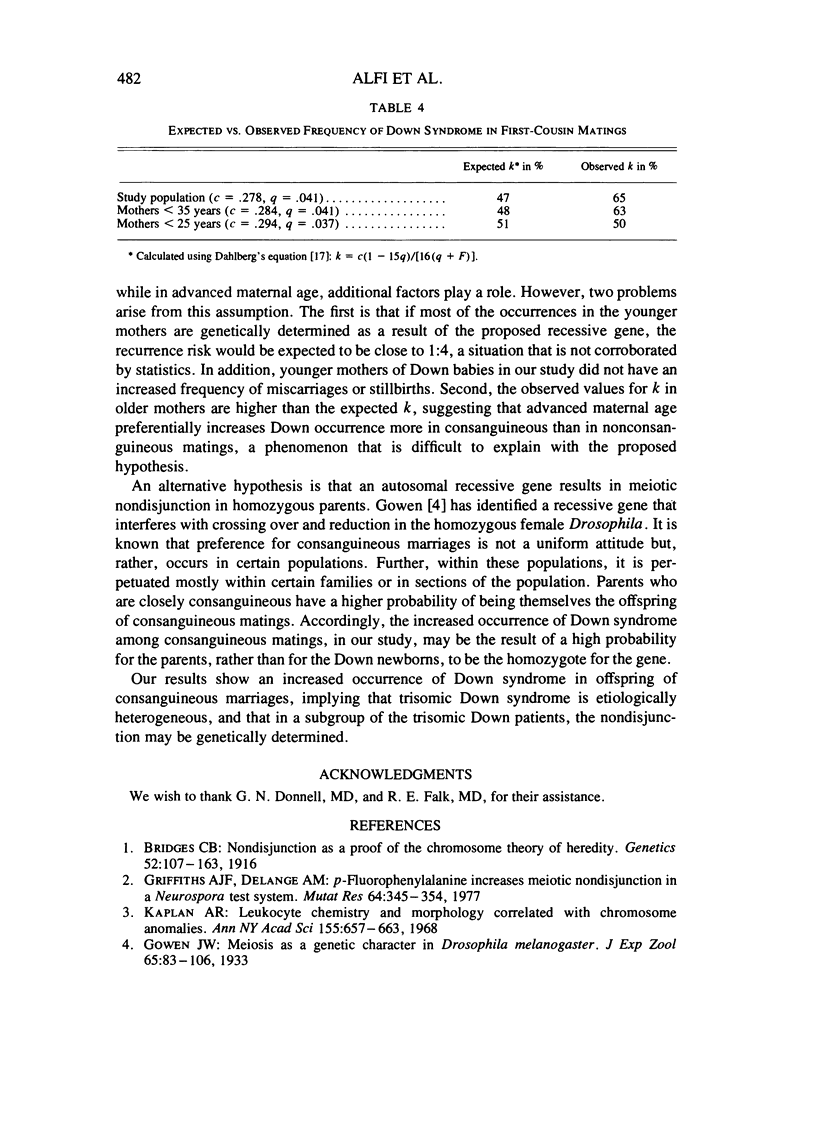

Selected References
These references are in PubMed. This may not be the complete list of references from this article.
- Abbo G., Zellweger H., Cuany R. Satellite association (SA) in familial mosaicism. Helv Paediatr Acta. 1966 Sep;21(4):293–299. [PubMed] [Google Scholar]
- Bridges C. B. Non-Disjunction as Proof of the Chromosome Theory of Heredity (Concluded). Genetics. 1916 Mar;1(2):107–163. doi: 10.1093/genetics/1.2.107. [DOI] [PMC free article] [PubMed] [Google Scholar]
- MANTEL N., HAENSZEL W. Statistical aspects of the analysis of data from retrospective studies of disease. J Natl Cancer Inst. 1959 Apr;22(4):719–748. [PubMed] [Google Scholar]
- PENROSE L. S. Mongolism. Br Med Bull. 1961 Sep;17:184–189. doi: 10.1093/oxfordjournals.bmb.a069906. [DOI] [PubMed] [Google Scholar]
- THERMAN E., PATAU K., SMITH D. W., DEMARS R. I. The D triisomy syndrome and XO gonadal dysgenesis in two sisters. Am J Hum Genet. 1961 Jun;13:193–204. [PMC free article] [PubMed] [Google Scholar]


